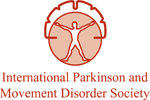Parkinson’s Diagnosis May Now Be Easier and Earlier

A team of specialists working for the International Parkinson and Movement Disorder Society (MDS) have developed a novel tool for healthcare professionals that could have a significant impact in Parkinson’s disease (PD) diagnosis and treatment, particularly in its early stages. It also may benefit disease research.
The development of the tool, actually a set of diagnostic criteria, came from two articles, “MDS Clinical Diagnostic Criteria for Parkinson’s Disease” and “MDS research criteria for prodromal Parkinson’s disease,” published in the journal Movement Disorders.
The specific symptoms an individual with PD experiences vary from person to person, and can range from tremors of the hands, arms, legs, jaw and face, to bradykinesia or slowness of movement, rigidity or stiffness of the limbs and trunk, and postural instability. PD can also appear in people in their 30s, but is most common around the age of 60. Currently, there are no objective tests to diagnosis PD, and clinicians with expertise in movement disorders rely on a medical history analysis and neurological examination.
Because PD symptoms frequently resemble those of other neurological disorders, the rate of misdiagnosis is as high as 25%.
The new methodology, known as Movement Disorder Society criteria, retains those elements already proven valuable as a diagnostic tool and omit those that are no longer justified. “In light of the latest scientific insights and technological advances, we were able to establish a new list of criteria based on expert clinical diagnosis,” Dr. Ron Postuma, Co-Chair of the MDS task force, a researcher in neurosciences at the Research Institute of the McGill University Health Centre and at The Neuro, and an associate professor in the Department of Neurology and Neurosurgery at McGill University, said in a recent news release. “Our aim was to create a benchmark that will systematize the diagnostic process, make it reproducible across centers and that will enable a wider range of non PD-specialized clinicians to provide patients with an accurate diagnosis.”
Steps in the methodology, according to researchers, include:
• a previous probability of prodromal (early stage) PD is delineated based upon age.
• calculating disease probability by adding diagnostic information, expressed as likelihood ratios. This information includes estimates of background risk (environmental and genetic risk factors) and the results of diagnostic marker testing.
• diagnostic markers need to have demonstrated their predictive worth, and include motor and non-motor clinical symptoms, clinical signs, and ancillary diagnostic tests.
The researchers emphasize that these criteria are only a first step in the formal delineation of early PD and require constant updating.
“These criteria accent how Parkinson’s disease is much more than a simple motor disorder, now incorporating motor and non-motor symptoms as well as the genetic component in some forms of PD,” added Dr. Daniela Berg, Chair of the MDS task force and an associate professor at the University of Tübingen, Germany.
“Our hope is that, as research advances, our understanding of the mechanisms at play in the disorder will enable us to develop therapies and treatments that can be administered early in this process, eventually slowing or stopping the progression of PD altogether,” Dr. Postuma said.






